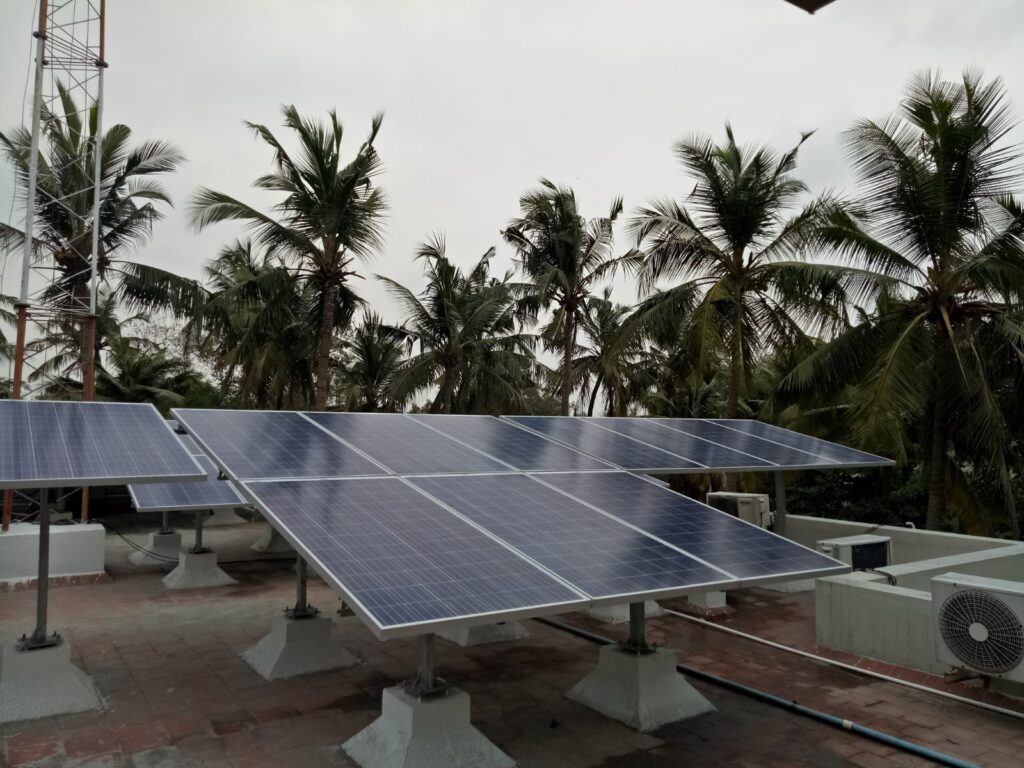Solar PV Power Plants

Solar Cell or Photovoltaic (PV) cell is a device that is made up of semiconductor materials such as silicon, gallium, etc. that converts sunlight directly into electricity.When solar cells absorb sunlight, free electrons and holes are created at positive/negative junctionsIf the positive and negative junctions of solar cell are connected to DC electrical equipment, current is delivered to operate the electrical equipment.
The DC power output from solar cell is converted into AC power by inverter and delivered to operate the AC equipments.
Solar On Grid power Generation systems
Solar On Grid power plants are also known as Grid – Tie system or Grid interactive System. In this system the solar inverter is directly synchronized with Grid power. The power produced from the solar is pumped to Grid through On Grid inverter which are specially designed for Anti islanding protection. The excess power from the solar system will be exported to Gird
Solar Off Grid Power Generation Systems
Solar Off Grid Systems are one in which the power output from inverter is connected directly with the load and battery. When there is no power from Grid, Off Grid inverter supply power from solar or battery. It is very useful when there is no Grid( EB ) power source is available. It is most economical for
smaller system and useful when the Grid
power source is not reliable.
Highlights
- Battery Backup
- Study Power Output
- Designed to supply power output for 24 hours. Designed to supply power output for 24 hours.
Specifications
- High total efficiency
- High maximum input voltage
- Built-in and monitored system protection devices

